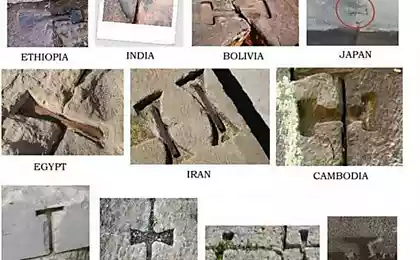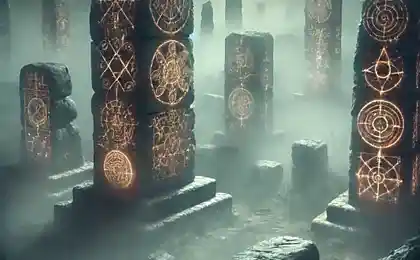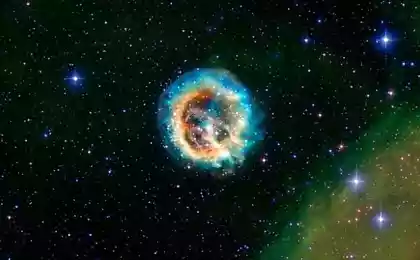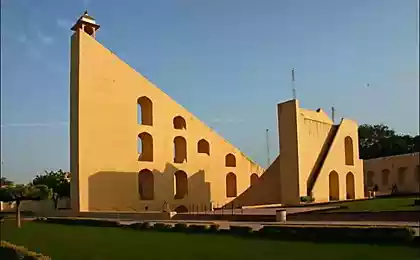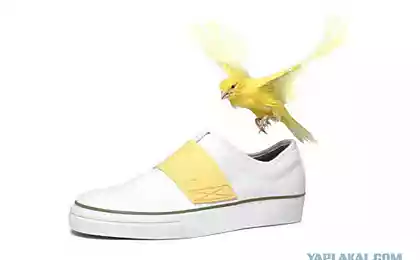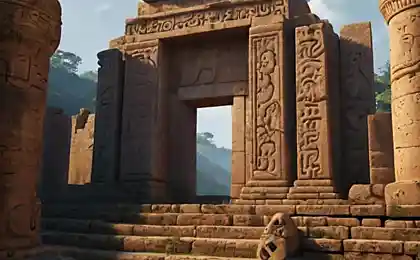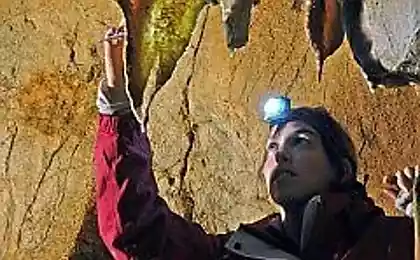243
The oldest observatories in the world
Gozek Circle is an unusual Neolithic structure in Gozek (Burgenlandkrais County, Saxony-Anhalt). The Gozek Circle was accidentally discovered in 1991 while reviewing the terrain from an airplane, it was then that the pilots noticed mysterious outlines on the wheat field. Unfortunately, the preservation of the ancient structure was pretty battered by time, but the reconstruction returned it to its original appearance.
Let’s take a closer look at it...
The Gozek circle, consisting of two log circles with three gates in clearly measured places, is ringed by a small moat. The sun’s rays penetrate through this gate on certain days, which confirms the theory of scientists: this Neolithic structure is one of the oldest observatories in the world.
In 1991, a strange circular structure was spotted from a plane in a wheat field in Germany. Scientists were interested in this information and found that two southern passages in this building mark the onset of the summer and winter solstice. The object was recognized as the oldest observatory in the world and was called the Gozek Circle. Many people disagree with this and believe that within the circles, ancient people made ritual sacrifices dedicated to the Sun.
Excavations were made by experts from the University of Halle-Wittenberg in 2002. Researchers were able to establish that the southern passages accurately mark the days of the summer and winter solstices. The accuracy and quality of the calculation of the circle indicate that the ancient creators of the “celestial calendar” had quite good knowledge in the field of astronomy, but its exact use is an inexhaustible source of the heated debate.
It is estimated that the observatory was built in 4900 BC and was probably the first of its kind. In ancient Europe, the “solar cult” was widespread, so the structure was used in a special ritual, possibly with the bringing of human sacrifices. In the initial study of the Gozek Circle, archaeologists recovered several human bones, including a decapitated skeleton.
During the excavations, it was found that the Gozek circle consisted of a mound, a moat and four concentric circles with the largest diameter of about 75 meters. At the edges of the circles were built 2 wooden 2.5-meter palisades, which had gates. The gate was three, with directions to the southeast, southwest and north. During the winter solstice, the observer standing in the center could see the sunrise through the southeast gate and the sunset through the southwest. On this day, the sun beam, passing through the narrow gate, as if drawing a strip of light on the ground. Archaeologists decided that the Gozek Circle was used for astronomical observations and to compile the lunar calendar. Only the priests were allowed to do this.
Inside the circle were found ceramic fragments with characteristic linear patterns. This is how the representatives of the culture of ceramics painted their dishes. These people lived around 4900 BC. The find is also often called the “German Stonehenge”, but the Goseck Circle was built 2-3 thousand years earlier than the British Stonehenge. According to its scheme, the German building more resembles the Irish Newgrange, a temple in the Urals Arkaim and other similar objects. However, in the Gozek circle were not used stone boulders. Perhaps in those ancient times, the ancestors of the Germans had not yet thought of it. Or they were too lazy to drag stones weighing 20-40 tons for hundreds of kilometers. Of course, it was easier to fence the territory with logs.
It is worth noting that 25 km from Gozek, a disk was found on which one of the oldest ideas about our solar system was displayed. In the place where it was found, there was a similar structure in the shape of a ring, which is younger than the Gozek circle by 14-15 centuries. There is no doubt that the cosmological scheme depicted on the disk is the result of centuries of observations of the sky, the basis of which was laid in the Gozek circle.
It is surprising that in such dark times, by our standards, people sought to gain knowledge about the structure of the universe beyond the already unexplored Earth. But who or what might have prompted people to think like this is a question no one will answer.
Recently, another structure in the shape of a ring was excavated near the Gozek Circle, only smaller and not so ancient. It was built 3,600 years ago. Inside, a mysterious green disk was found depicting the sun, moon and stars, with the sun in the center. Apparently, the disk reflected the cosmological ideas of Stone Age people about the world. Perhaps the beginning laid by the construction of the Gozek circle was continued in the following millennia.
Professor Harald Möller states, “The Circle was built by the first farmers to settle on this plain and testifies to their extraordinary astronomy.” However, one thing is unclear: if the building is suitable only to show two days a year - the winter and summer solstice, then is it worth talking about outstanding abilities? Most likely, it was a cult magical structure.
Archaeologists inside the circles found traces of bonfires, bones of people and animals. The most horrific find was found near the southeastern gate - a decapitated skeleton. Apparently, on certain days sacrifices were made here during mysterious magical rituals. Why the circle was abandoned is unknown. No traces of artificial destruction and fires were found there.
Source: /users/78
Let’s take a closer look at it...
The Gozek circle, consisting of two log circles with three gates in clearly measured places, is ringed by a small moat. The sun’s rays penetrate through this gate on certain days, which confirms the theory of scientists: this Neolithic structure is one of the oldest observatories in the world.
In 1991, a strange circular structure was spotted from a plane in a wheat field in Germany. Scientists were interested in this information and found that two southern passages in this building mark the onset of the summer and winter solstice. The object was recognized as the oldest observatory in the world and was called the Gozek Circle. Many people disagree with this and believe that within the circles, ancient people made ritual sacrifices dedicated to the Sun.
Excavations were made by experts from the University of Halle-Wittenberg in 2002. Researchers were able to establish that the southern passages accurately mark the days of the summer and winter solstices. The accuracy and quality of the calculation of the circle indicate that the ancient creators of the “celestial calendar” had quite good knowledge in the field of astronomy, but its exact use is an inexhaustible source of the heated debate.
It is estimated that the observatory was built in 4900 BC and was probably the first of its kind. In ancient Europe, the “solar cult” was widespread, so the structure was used in a special ritual, possibly with the bringing of human sacrifices. In the initial study of the Gozek Circle, archaeologists recovered several human bones, including a decapitated skeleton.
During the excavations, it was found that the Gozek circle consisted of a mound, a moat and four concentric circles with the largest diameter of about 75 meters. At the edges of the circles were built 2 wooden 2.5-meter palisades, which had gates. The gate was three, with directions to the southeast, southwest and north. During the winter solstice, the observer standing in the center could see the sunrise through the southeast gate and the sunset through the southwest. On this day, the sun beam, passing through the narrow gate, as if drawing a strip of light on the ground. Archaeologists decided that the Gozek Circle was used for astronomical observations and to compile the lunar calendar. Only the priests were allowed to do this.
Inside the circle were found ceramic fragments with characteristic linear patterns. This is how the representatives of the culture of ceramics painted their dishes. These people lived around 4900 BC. The find is also often called the “German Stonehenge”, but the Goseck Circle was built 2-3 thousand years earlier than the British Stonehenge. According to its scheme, the German building more resembles the Irish Newgrange, a temple in the Urals Arkaim and other similar objects. However, in the Gozek circle were not used stone boulders. Perhaps in those ancient times, the ancestors of the Germans had not yet thought of it. Or they were too lazy to drag stones weighing 20-40 tons for hundreds of kilometers. Of course, it was easier to fence the territory with logs.
It is worth noting that 25 km from Gozek, a disk was found on which one of the oldest ideas about our solar system was displayed. In the place where it was found, there was a similar structure in the shape of a ring, which is younger than the Gozek circle by 14-15 centuries. There is no doubt that the cosmological scheme depicted on the disk is the result of centuries of observations of the sky, the basis of which was laid in the Gozek circle.
It is surprising that in such dark times, by our standards, people sought to gain knowledge about the structure of the universe beyond the already unexplored Earth. But who or what might have prompted people to think like this is a question no one will answer.
Recently, another structure in the shape of a ring was excavated near the Gozek Circle, only smaller and not so ancient. It was built 3,600 years ago. Inside, a mysterious green disk was found depicting the sun, moon and stars, with the sun in the center. Apparently, the disk reflected the cosmological ideas of Stone Age people about the world. Perhaps the beginning laid by the construction of the Gozek circle was continued in the following millennia.
Professor Harald Möller states, “The Circle was built by the first farmers to settle on this plain and testifies to their extraordinary astronomy.” However, one thing is unclear: if the building is suitable only to show two days a year - the winter and summer solstice, then is it worth talking about outstanding abilities? Most likely, it was a cult magical structure.
Archaeologists inside the circles found traces of bonfires, bones of people and animals. The most horrific find was found near the southeastern gate - a decapitated skeleton. Apparently, on certain days sacrifices were made here during mysterious magical rituals. Why the circle was abandoned is unknown. No traces of artificial destruction and fires were found there.
Source: /users/78
Best National Geographic Photos for July 2014
European satellite recorded a decrease in the area of the poles by half




